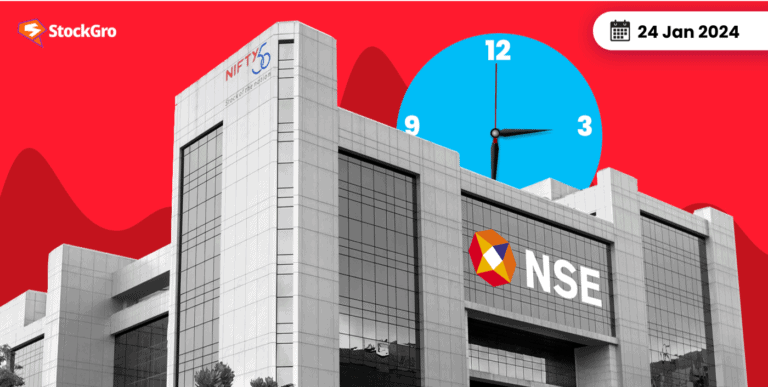Table of contents
The stock market is a place for those aiming to make high profits but is mostly suitable for investors with high risk-bearing capabilities. Given the constant exposure to market events, stocks listed on the exchange go through high levels of price fluctuations, offering equal chances of profits and losses to investors.
Despite the risks involved, some investors choose the stock market to invest in because of the multiple strategies available to mitigate risks and maximise profits. Understanding such strategies and tools is essential for a successful investment journey in stocks.
One such tool to control risks is the stop-loss order in trading. In today’s article, let’s go through the concept of stop-loss trading and how to calculate stop-loss in intraday trading.
What is stop loss in trading?
Stop loss, as the term suggests, is a facility provided by brokers to stop the loss at a certain point. A stop-loss order is where traders place orders to buy or sell shares once they fall below a specific price.
Let’s consider an example to understand how stop-loss orders work:
A trader wants to sell shares whose purchase price was ₹100. The trader speculates a rise in share price. So, he does not want to sell the shares immediately but wants to wait until prices increase to earn a higher profit. A change in the company’s management makes him unsure about the price rise, so he plans to cover himself for the risk of a price decline.
Accordingly, he sets a stop loss order at ₹98. If the price rises as per his speculation, he sells them and makes a profit. But, if the price falls, his shares will be sold right after the price reaches ₹98, limiting the loss to ₹2 per share.
Importance of stop loss in intraday trading
- Intraday trading requires constant monitoring of share prices to ensure no opportunity to square off is lost. Placing a stop-loss order takes off the burden from the investor as shares automatically square off after it reaches the stop-loss price.
- In the above example, losses are limited to ₹2 per share because of the stop-loss order. The absence of stop-loss could increase the loss per share.
- Stop-loss order eliminates manual intervention to square off trades. Shares are automatically squared off once they reach the desired price.
How to fix stop loss in intraday trading
Determining the correct stop-loss level is significant for a profitable trade. An incorrect stop-loss level might defeat the purpose of stop-loss and lead to deeper losses.
- Percentage method
This is the simplest method of determining stop-loss levels. Like investors plan the return they expect on an investment, the loss they are willing to undertake must be represented as a percentage of the investment cost. Frugal investors limit the percentage to 1% to 3%, while others may be open to a bigger risk.
Example: If a stock is purchased at ₹100, the stop loss level may be set at ₹97 (₹100 – 3%).
- Support method
This method is slightly technical compared to the percentage method. It uses support and resistance levels to set stop-loss prices. A support level suggests the lowest price a share reaches, after which it rises.
Traders consider the most recent support level and set a stop-loss level around it.
- Moving average method
This is another technical method of determining stop-loss levels. Traders calculate moving averages and set the stop-loss level around the moving average. Usually, it is set slightly below the moving average to allow some space for fluctuations.
Bottomline
Stop-loss orders are significant in intraday trading as they help limit losses while squaring off positions. While there are few technical tools to determine the stop-loss price, traders should also analyse past trends and stock performances before setting the limit.
FAQs
Yes, stop-loss orders work well for options trading, too. Traders use similar methods to calculate stop-loss levels for options. The strike price also plays a significant role in determining the stop-loss level.
A limit order suggests the maximum price at which you are willing to buy or sell. A stop-loss order, on the other hand, suggests the maximum amount you are willing to give up on (lose) while buying or selling stocks.
The major risk or limitation of a stop-loss order is that it limits profits, too. A fluctuation might only be temporary. Traders willing to wait without the stop-loss order may end up making profits during a market correction. A stop-loss order does not allow traders to wait and closes the trade too soon.
No, a stop-loss is not mandatory. Stop-loss is a type of order, like market order, limit order, etc. A stop-loss order is a strategy to limit losses that are not possible in regular orders like market orders.
Yes, stop-loss orders are automatically executed. Both buy and sell orders get executed automatically once shares cross the determined price. Traders set stop-loss limits and allow the system to execute trades upon reaching desired prices.
